Affiliate disclosure: This post may contain affiliate links. Please see our Privacy Policy.
Elderberry juice is packed with nutrients and antioxidants, making it a popular choice for homemade remedies like syrups, jams, and juices. Whether you’re juicing fresh elderberries or dried, the process is simple and straightforward.
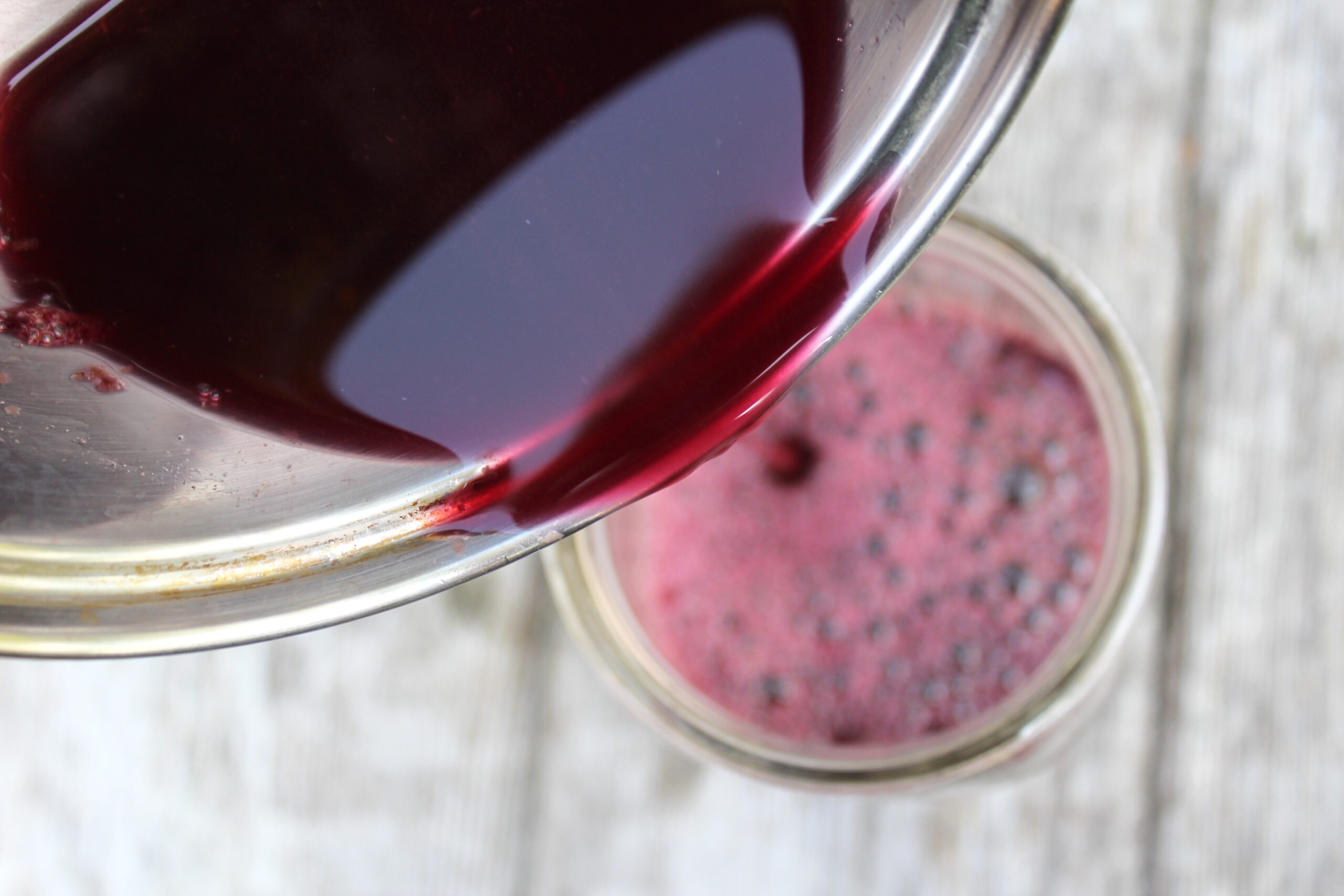
Elderberries (Sambucus nigra) are small, dark purple fruits that you can grow at home, either from nursery starts or from elderberry cuttings, and you can also forage elderberries in the wild in season. They’re most often used medicinally, but their juice is also tasty when sweetened or mixed into drinks.
Traditionally used to help boost the immune system, elderberries are often made into remedies, including elderberry syrup and elderberry tincture, but you can also simply enjoy the juice as is. Elderberry juice is not only delicious, but it also contains a wealth of nutrients, antioxidants, and vitamins, especially vitamin C.
Before you jump into juicing elderberries, there are a few things to keep in mind. Elderberries contain small seeds and compounds that can be toxic when raw, so it’s important to cook them before juicing. The heat neutralizes these toxins, making them safe to consume. Once juiced, elderberry juice can be enjoyed on its own or mixed into smoothies, teas, or cocktails. It can also be used as a base for making homemade elderberry syrup.
I’ve tried to juice elderberries raw in a juicer, planning to cook the juice afterward (so I could save the seeds for planting), but it didn’t work. Elderberries just don’t give up their juice without cooking.
(Trust me, I’ve tried a chinois sieve, food mill, blender, and juicer. No luck; they just clog up, and you don’t get any juice.)
You will need to cook them to get juice, but that’s ok, cooking is an efficient way to get the job done, and you can’t use the juice raw anyway.
Whether you’re juicing elderberries for their health benefits or just because you love the taste, this is a great way to preserve the goodness of these tiny fruits, especially during cold and flu season when their immune-boosting properties are most appreciated.
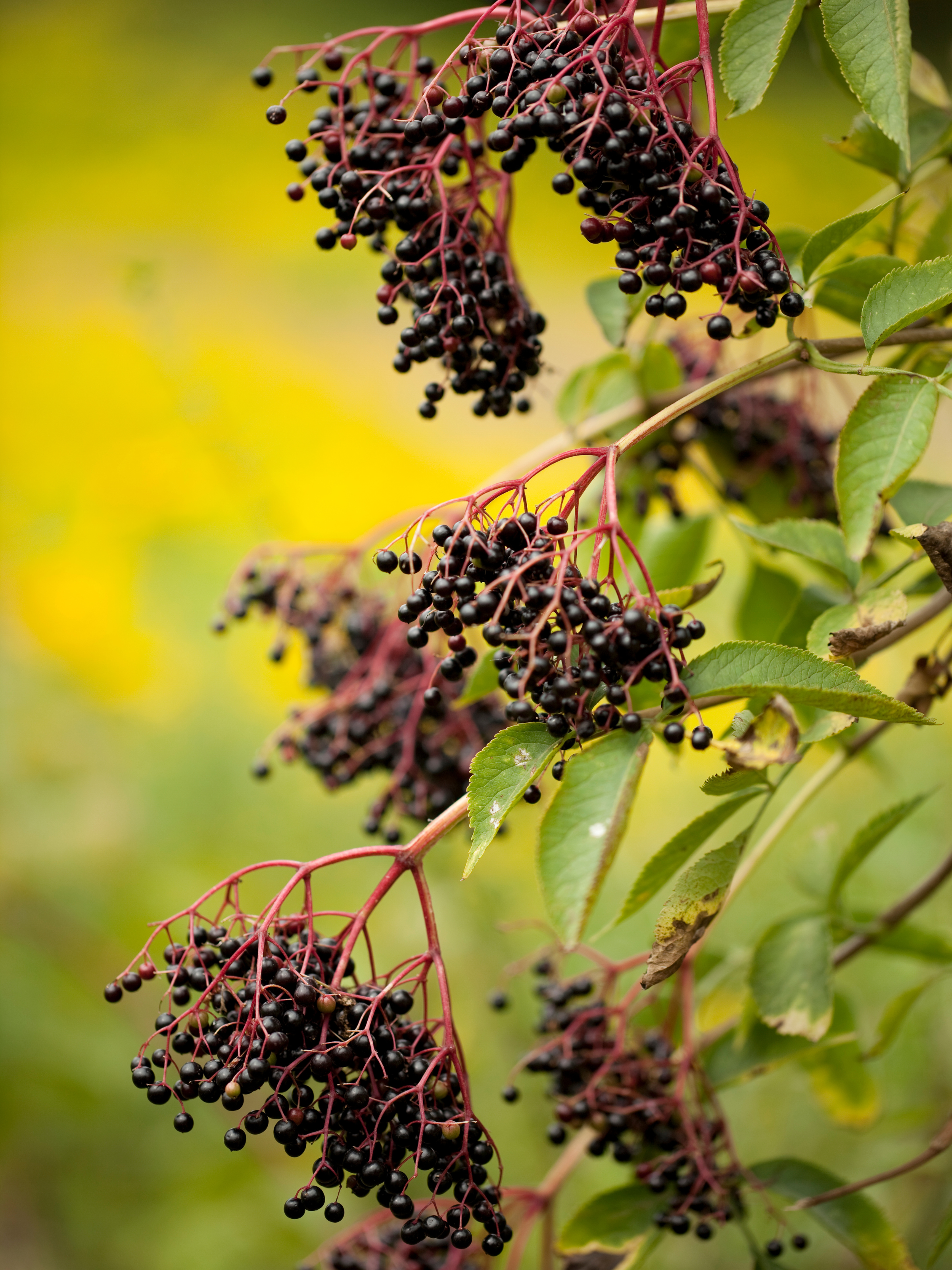
Juicing Fresh Elderberries
To start, strip the elderberries from their stems. It’s much easier to do this if the berries are frozen first. Freezing the berries helps them come off the stems without mashing, which preserves more of the juice. If you skip the freezing step, be prepared for purple-stained fingers, which is just juice that’s not making it into your pot.
Once frozen, you can either strip the berries with your fingers or use a fork to remove them from the stems—whatever works best for you. I find my fingers do the job just fine.
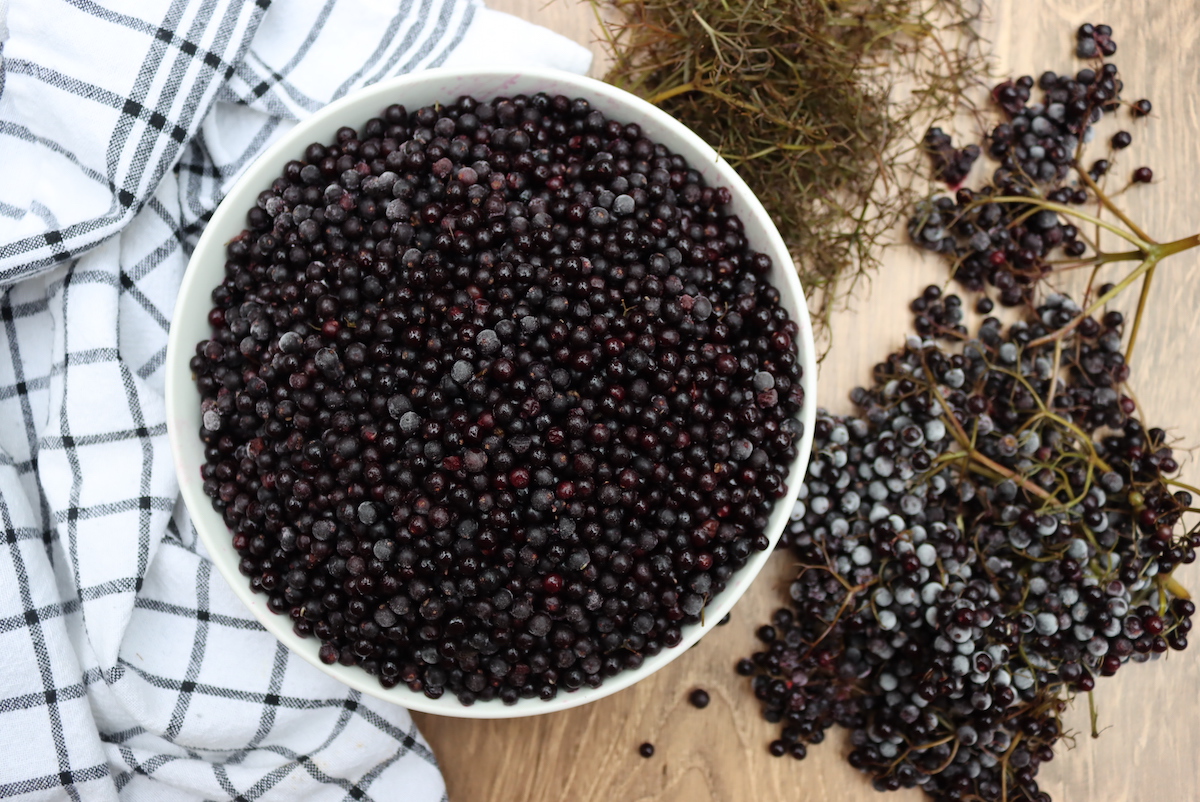
After you’ve removed all the berries, toss them into a saucepan or stockpot, making sure to leave behind any stems and leaves.
Add a bit of water to the pot—about 1 to 2 cups for every 2 cups of elderberries. Bring the mixture to a boil, then reduce the heat and let it simmer for about 10 minutes. This will soften the berries and release all their delicious juices.
After simmering, strain the elderberry mixture through a fine mesh strainer. I like to use a spatula to press the berries in the strainer, ensuring that I get every last drop of juice. The seeds and skins will stay behind, leaving you with a smooth, concentrated elderberry juice.
With 2 cups of fresh elderberries and 2 cups of water, you should yield about 2 cups of finished juice.
Juicing Dried Elderberries
If you don’t have fresh elderberries on hand, dried elderberries work just as well, though they take a bit longer to extract the juice from.
To make juice from dried elderberries, start with 1/2 cup of dried berries. Add them to a saucepan with 3 to 4 cups of water, depending on how concentrated you want your juice. Bring the mixture to a boil, then reduce the heat and simmer for about 20 minutes. The dried elderberries will absorb some of the liquid, so you’ll need a bit more water to compensate.
After simmering, strain the mixture through a fine mesh strainer and press out any remaining juice. With 1/2 cup of dried elderberries and 3 to 4 cups of water, you’ll yield about 2 cups of finished juice.
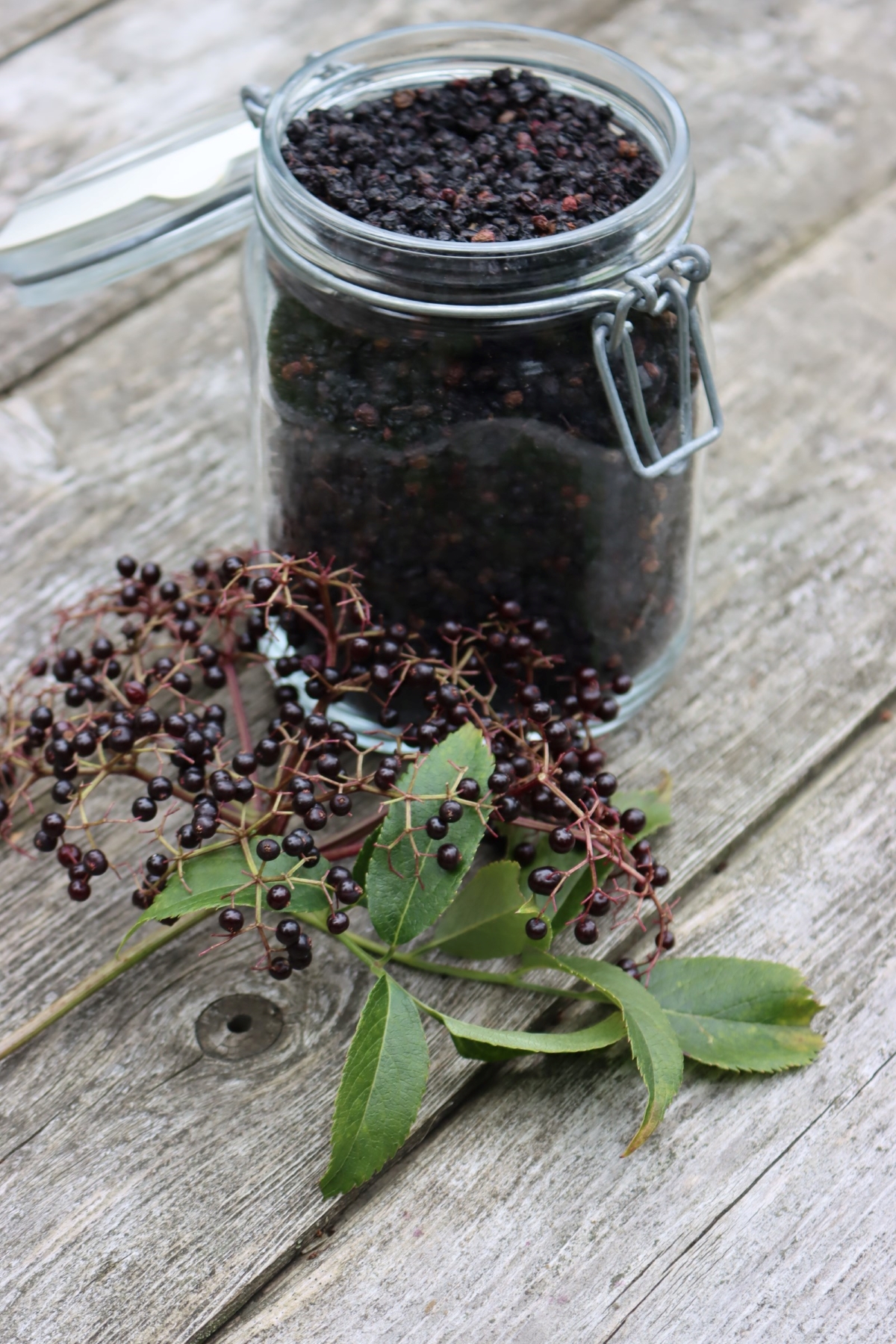
Final Notes
- Storage: Elderberry juice can be stored in the refrigerator for about a week. For longer storage, freeze the juice in ice cube trays or freezer-safe containers.
- Sweetening: Elderberry juice can be tart, so feel free to sweeten it with honey, maple syrup, or your favorite sweetener to taste.
- Usage: Enjoy the juice on its own, mix it with other fruit juices, add it to smoothies, or use it to make elderberry syrup.
Whether you’re juicing fresh or dried elderberries, this homemade juice is an excellent way to harness the health benefits of elderberries and add a delicious, immune-boosting beverage to your routine!
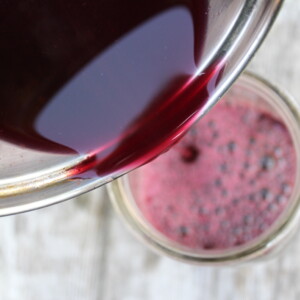
Elderberry Juice
Ingredients
- 2 cups fresh elderberries, or 1/2 cup dried elderberries
- 2 cups water, for fresh berries, or 3-4 cups water for dried berries
- Optional: Sweetener to taste, honey, maple syrup, etc.
Instructions
- If you’re using fresh elderberries, start by harvesting them from their stems. The berries grow in clusters, so you’ll need to pull the small berries off the larger stem clusters. Freezing the berries first makes this process much easier and cleaner, as it allows you to strip the berries off without mashing them. If you’re using dried elderberries, you can skip this step, as they don’t need to be stripped.
- After you’ve removed the berries from their stems, place them in a bowl of water and rinse gently to remove any dirt or debris. If you notice any leaves or small twigs, remove these as they can contribute a bitter taste to the juice. Make sure to only use the berries, as the stems and seeds are not suitable for consumption.
- Add the prepared elderberries to a medium-sized saucepan. If you’re using fresh elderberries, add 2 cups of water to the pot. If you’re using dried elderberries, add 3-4 cups of water. Bring the mixture to a boil, then reduce the heat and simmer for about 10 minutes for fresh elderberries, or 20 minutes for dried elderberries. During this time, the berries will break down and release their juice, turning the water a deep purple color.
- Once the berries have softened and the liquid has taken on a rich color, use a spatula or spoon to press the berries against the side of the pot to help release any remaining juice. After pressing, let the mixture simmer for an additional 5 minutes to ensure that all of the juice has been extracted.
- Remove the pot from the heat and let the berry mixture cool slightly. Then, strain it through a fine mesh strainer or cheesecloth placed over a bowl or large measuring cup. Use the back of a spoon or spatula to press the remaining pulp, extracting as much juice as possible. Be sure to discard the leftover pulp and seeds, as they aren’t suitable for consumption.
- (Optional) Elderberry juice can be quite tart, so you may want to sweeten it to taste. Stir in your preferred sweetener, such as honey, maple syrup, or another sweetener of your choice. Adjust the sweetness to your liking, and feel free to add other fruit juices, like apple or grape, to tone down the tartness and create a milder flavor.
- Once the juice is sweetened to your liking, pour it into clean bottles or jars. You can store your elderberry juice in the refrigerator for about 5-7 days. For longer storage, freeze the juice in ice cube trays and thaw individual portions as needed. Enjoy it chilled, mixed with other juices, or as a base for drinks and cocktails!
Notes
Nutrition
Nutrition information is automatically calculated, so should only be used as an approximation.
Elderberry Recipes
Looking for more ways to use elderberries?
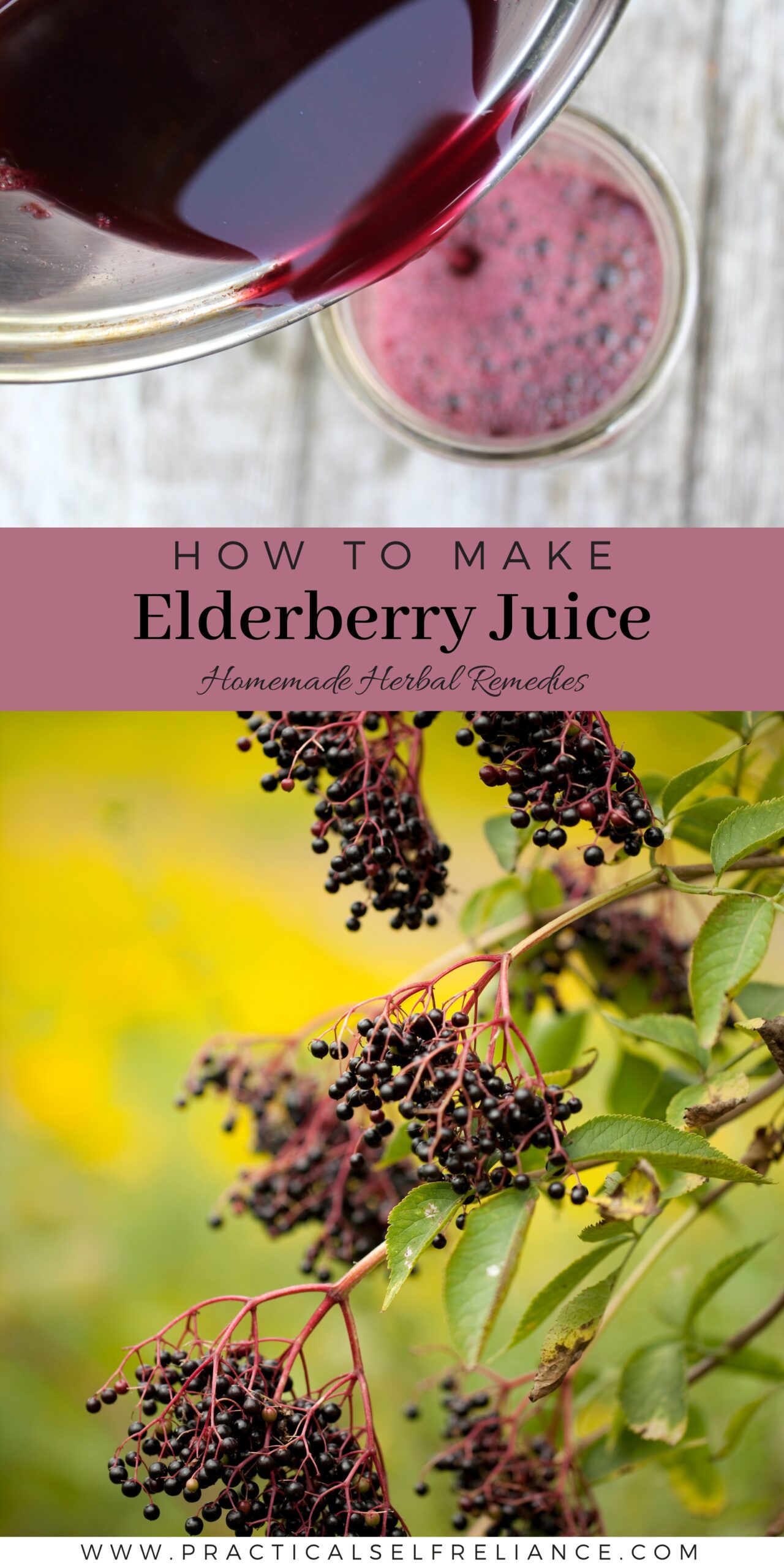


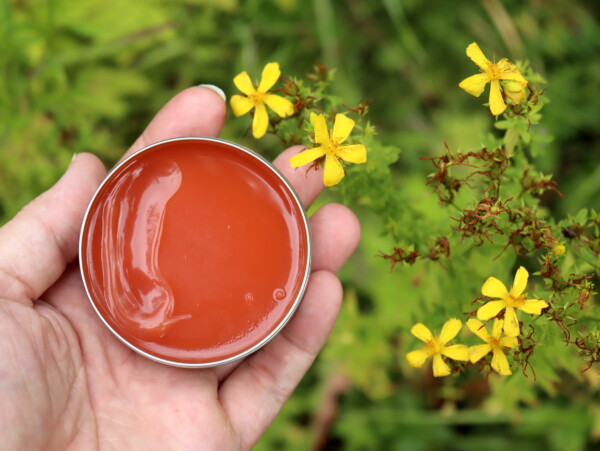
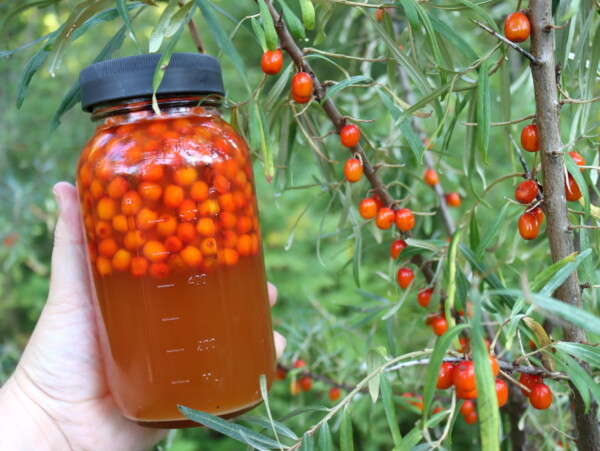










I have several jars of simmered juice that has been in my fridge for 2 1/2 wks now. It smells and tastes slightly fermented. What are your thoughts to still use it to make jelly?
This is my first year to find and harvest on my property, we got crazy busy and I didn’t realize how long it has actually been in the fridge already. I feel pretty good about it but I’ve been googling and looking on YouTube to confirm that it would still be ok. There is no sign of mold or black specks, etc.
What would you do if this happened to you? Would you still use it for something?
You’ll have to use your own best judgement here. It’s most likely started to ferment into wine, which is more or less fine food safety wise, at least from your description. It’s hard for me to advise you here for certain though, since I’m not right there with you tasting it. If you feel good about it, and it tastes alright, then great. Enjoy!
How many cups of fresh elderberries do I need to make three cups of juice for the mead
You can start off with about 3 to 4 pounds which should ensure that you get plenty of juice.
From the same plant, my friend and I cut pieces of the elderberry stean/trunk that were 12 to 18 inches long. We both stuck them straight into the ground about halfway. Mine failed, bit hers grew roots and is a nice bush now. Another way to proliferate the elderberry.
How much juice would I use to make elderberry syrup?
You can use any amount of elderberry juice that you like. Here is a link to a post on elderberry syrup which gives you the ratio of juice and honey to use. https://practicalselfreliance.com/elderberry-syrup/
Thank you for your post on juicing elderberries. How long will the juice keep in the refrigerator before it is processed?
It should keep in the refrigerator for about a week.
While I haven’t yet found elderberries, I DO have beautyberries and their processing for juice seems similar (boil and squish). Can I ask: you say a half inch of water to begin the boil…but that is a ratio against what amount (volume or weight) of elder/beautyberries? Thank you for your wine instructions – I have made your mango wine and it was amazing! Now I’m doing peach….but beautyberry is next, so….
It’s not really a ratio so much as it is just enough water to keep the berries from scorching in the bottom of the pan.
Are dried elderberries good to use as well? I’ve dried mine
This post just shows you how to juice fresh elderberries which you will then use in your elderberry recipes. You can use dried elderberries for most recipes as well, they just need to be rehydrated. What is it that you’re wanting to make with your elderberries?
Thank you for sharing your wisdom on a vast array of topics. Your blogs are always my go-to for anything homesteading.
Have you by chance made or found an elderberry lemonade concentrate that can be canned to make shelf stable? I know you aren’t able to can the juice by itself (at least as far as I have found), but wondering if the addition of the lemon juice and sugar/sweetener would make it safe to can?
Yes, you can definitely get it acidic enough with lemon juice and make a lemonade concentrate. The exact amount though, I don’t know off the top of my head. I’m hoping to do some tests this summer when ours come ripe.
Thank you for posting your wisdom
You’re welcome.
Do you think I could pass elderberries through my cold press juicer and then cook the juice to make syrup? I am trying to find an answer but all I am finding is steam juicing.
It is really difficult for elderberries to “give up the juice” without the added heat which is why most people use steam juicing. The only way to know if it will work is to just give it a try. Let us know how it turns out.
What is the best water-elderberry ratio for juice?
You really just want enough water in the bottom of the pot to keep them from scorching while they cook. Just place about an inch of water in the bottom and you will be fine.
Can I juice poke berry fruit the same way ?
PS … my elderberry plant flowered but didn’t fruit . Am I doing something wrong ?
Thank you
Chris
Poke fruit is toxic so far as I know? I wouldn’t recommend eating it.
If they didn’t actually set fruit, it could be a pollination issue, soil fertility issue or just a dry year. (We had pretty severe drought here, and they need a good bit of water.)
I have read that pokeweed leaves are edible only before any berries begin to form. Otherwise, from what I have read, the plant, berries and all, are toxic to eat. Safe to touch.
Can I store the elderberry juice in the fridge and then reheat to make elderberry mead a few days later? The elderberries are ready to pick now but I’m waiting on the champagne yeast to arrive. Love your blog btw
Yes, that should totally still work!
How would I use the juice to make syrup, gummies & jelly?
Good question. Here’s information on making both elderberry syrup and gummies. And here’s my elderberry jelly recipe.
Thank you so much!